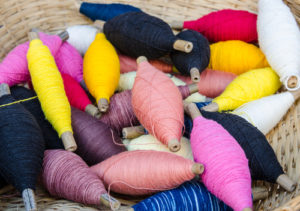
DTG Printing Myths
DTG (Direct-to-Garment) printing can be defined as “the process of printing graphics directly onto textiles and garments” – hence, the name. With the help of this advanced printing technology, textile manufacturers can easily produce a number of intricate patterns and designs on different fabrics. Plus, such designs will stay as such for many years, unlike iron-on style transfer printing that usually fades off over time.
DTG printing is also known as digital apparel printing, digital garment printing, and inkjet to garment printing. When compared to conventional screen printing methods, DTG printing offers great flexibility when it comes to its designs and complexity. Usually, this type of graphic designs is created on t-shirts by employing advanced inkjet technology. Anyhow, just like all other genres, there are many myths associated with this textile printing technology as well. Below are 3 of such myths about Direct-to-Garment printing.
Myth: White Ink Used in DTG Printing Always Clogs
Truth: The main reason of clogging is actually associated with the printer maintenance and its surrounding environment, not with any particular color. Hence, it is recommended to do regular printer repairs and maintain a humidity of 40% around the machine. Even though there were clogging issues when it comes to white ink at the beginning, the latest white ink options are free from clogging problems. However, it is recommended to stir or whisk your white ink thoroughly before you start the printing process.
Myth: You Cannot Wash DTG-Printed Clothes as Good as Screen-Printed Clothes
Truth: The key for incredible washability in the case of both screen-printed and DTG-printed clothes is ideal pre-treatment and cure. Note that Direct-to-Garment printing is water-based and hence, you must compare it with water-based screen printing technology rather than dry printing. The standard washing scale for water-based screen-printed clothes and DTG-printed clothes is 50 cycles. Nevertheless, both these options will usually last longer.
Myth: You Cannot Use DTG Printing on Polyester Fabrics
Truth: Normally, DTG printing method works well on pure cotton fabrics as well as the blended cotton textiles. Besides, you can print on some type of polyester fabrics too using DTG technology, although this printing technology is not that commonly used on polyester. Besides, even though monochrome DTG printing can be done on polyester fabrics, the actual challenge here is in the case of color printing. Anyhow, experts are working on advancing the DTG printing technology in such a way that it complements all type of fabrics including every polyester variant.

